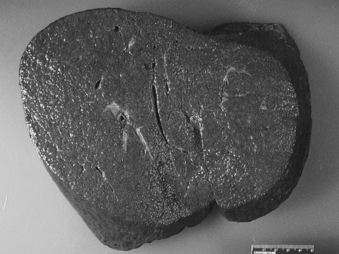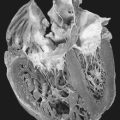88. Wilson’s Disease
Definition
Wilson’s disease is an autosomal recessive, inherited, rare, progressive disorder in the metabolism of copper, characterized by excessive copper deposits in the brain, liver, and other tissues. These deposits result from excessive absorption of copper by the small intestines coupled with inadequate excretion of copper by the liver.
Incidence
The incidence of Wilson’s disease varies according to the country and the rate of consanguinity. For example, the incidence in Japan is 1:30,000, whereas the incidence in Australia is 1:100,000.
Internationally there are estimated to be 10 to 30 million cases of Wilson’s disease. The age of onset of liver manifestations peaks between 10 to 13 years, whereas neuropsychiatric illness onset ranges from 19 to 20 years. Females present fulminant cases more frequently than males by a 4:1 ratio.
Etiology
Wilson’s disease is a result of an autosomal recessive inheritance of the Wilson’s disease gene on chromosome 13; more than 40 mutations have been delineated.
Four Stages of Wilson’s Disease
| Stage I | Initial copper accumulation by liver binding sites |
| Stage II | Acute copper redistribution within the liver and systemic circulation |
| Stage III | Chronic accumulation of copper in the brain, renal, and other nonhepatic tissues |
| Stage IV | Achievement of copper balance via chelation therapy |
 |
| Wilson’s Disease. Enlarged, firm, nodular appearing liver from a patient with Wilson’s disease who underwent liver transplant. |
Signs and Symptoms
• Asymmetric tremor
• Ataxia
• Coombs-negative acute intravascular hemolysis
• Defective renal acidification
• Degenerative arthropathy
• Difficulty speaking
• Disinhibition
• Dystonia (rare)
• Excessive renal excretion of amino acids, glucose, fructose, galactose, pentose, uric acid, phosphate, and calcium
• Excessive salivation
• Flexion contractures (rare)
• Grand mal seizures (rare)
• Hemolytic anemia (rare)
• Impulsiveness
• Kayser-Fleischer rings
• Mask-like facies
• Osteopenia
• Personality changes
• Rigidity (rare)
• Self-injurious behaviors/actions
• Spasticity (rare)
• Urolithiasis
Medical Management
Chelation therapy is the pharmacologic treatment of choice in Wilson’s disease. The primary chelating agents are penicillamine and trientine.
Surgical interventions are limited. Portal hypertension may require transjugular intrahepatic portosystemic shunting (TIPS) or surgical decompression, particularly for the patient who has uncontrollable and/or recurrent variceal bleeding.
The only potentially curative intervention for Wilson’s disease remains orthostatic liver transplantation. This most extreme measure is typically reserved for the patient in whom the effects of Wilson’s disease progress to fulminant liver failure or the patient who develops end-stage liver cirrhosis.
Complications
• Coagulation abnormalities
• Fulminant liver failure
• Hepatic encephalopathy
• Hepatorenal syndrome
• Variceal bleeding
Anesthesia Implications
The first focus regarding the patient with Wilson’s disease revolves around the function or dysfunction of the liver. Depending on the degree of liver dysfunction the patient has, virtually all the anesthesia-related medications may be anticipated to have a prolonged duration of effect. Cirrhosis and any attendant ascites may block either the production or retention of serum proteins and thus increase the bioavailability of many anesthesia-related medications, such as benzodiazepines or thiopental. Increased bioavailability can intensify drug effects. Therefore many of these anesthesia-related drugs should be given in reduced dosages.
Liver dysfunction secondary to Wilson’s disease may hamper production of several clotting factors within the coagulation cascade or disable adequate utilization of vitamin K. Coagulation studies should be obtained preoperatively to determine whether the patient may benefit from administration of perioperative vitamin K and/or fresh frozen plasma to reduce inordinate blood volume losses. In addition, the patient with Wilson’s disease should have a complete blood count (CBC) done preoperatively. The focus of the CBC should be on the platelet count because of the thrombocytopenia that penicillamine may induce. The patient may also require transfusion of platelets perioperatively—again, to reduce the amount of blood volume losses.
The abnormal metabolism of copper can produce copper deposition within brain tissue, resulting in various neuropsychiatric manifestations including ataxia, tremors, and dystonia. Because of these physical manifestations, obtaining intravenous access may be difficult and may require two people to establish, or may even necessitate placement of a central access intravenous line to ensure stability. The patient may be difficult, unable to fully cooperate as the result of confusion or other psychiatric manifestations secondary to the abnormal copper deposition in the brain tissue. The patient with Wilson’s disease should not receive medications that exacerbate the extrapyramidal symptoms, such as metoclopramide, droperidol, promethazine, or prochlorperazine.
Renal function should be assessed before anesthesia. Urine output, along with blood urea nitrogen (BUN) and serum creatinine values, should be obtained to indicate the degree of renal dysfunction secondary to Wilson’s disease. Because of the neuropsychiatric manifestations of this disease, the patient may be chronically dehydrated, resulting in a low urinary output as well as elevated BUN and serum creatinine concentrations. Altered renal function can significantly alter elimination of metabolic byproducts, active and inactive, of many anesthesia-related medications.







